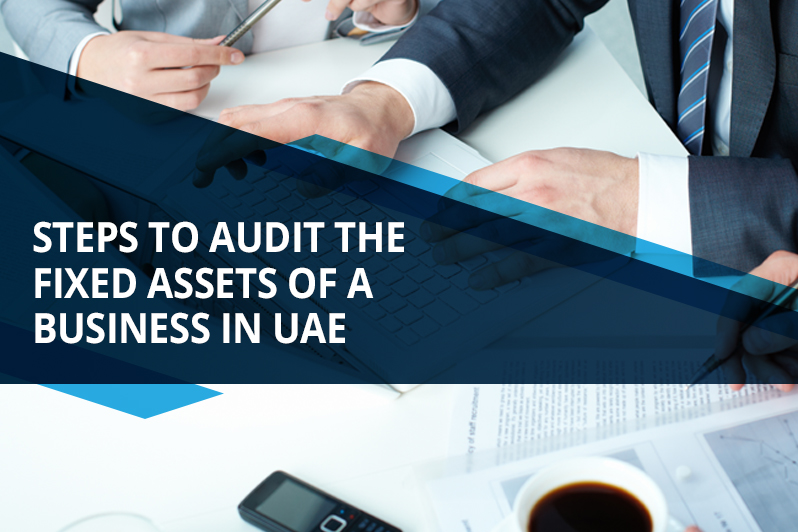A company's fixed assets are assets that are utilized for an extended period of time, including equipment, machinery, buildings, and land. Another characteristic of fixed assets is their physicality. Compared to many equities, they can’t easily be converted into cash. The substantial nature of fixed assets and the fact they can’t simply be spirited away within the pocket of a dishonest employee or through online transactions accounts for the underestimating of business owners on how easy they can be made off in a way that goes unnoticed up until a business is audited.
Establishing that the fixed assets of a business exist and evaluating the value of the assets are absolutely essential when auditing. Despite this, a lot of businesses don't do a good job at keeping track of their fixed assets.
Steps to Audit the Fixed Assets of a Business
Step 1: Checking for existence and completeness of fixed assets on company balance sheet
The business will provide the auditor with detailed lists of items that are included in the fixed assets so the audit firm conducting the internal audit for fixed assets in UAE can check for completeness and existence of assets. Detailed lists include the descriptions of assets, method of depreciation, original costs, depreciable life, as well as depreciation expense in the previous and current years. The audit will be reviewing the lists as well for reasonableness. Lastly, the expert will determine whether or not the account balance that’s reflected on the company’s financial statements is a match to the depreciation schedules of the assets.
Step 2: Perform analytics
Analytical audit procedures for fixed assets of a business in UAE encompass an investigation of the identified fluctuations as well as relationships which are inconsistent with relevant information. An auditor will check why there’s deviation from the predicted amounts. Auditors in Dubai will be comparing account balance in the current year to the balance in the prior year and determine whether or not the differences are reasonable. A ratio analysis may be conducted. Any irregular fluctuation can be a result of misstatement which needs to be taken into consideration carefully and paid close attention to when conducting the audit of company fixed assets. The auditor will be tracking rations for periods of three and five years, then evaluate ratios which produce unexpected variances.
Step 3: Review of documentation
Invoices are reviewed in order to determine whether or not the business is recording acquisition costs correctly, as well as asset dispositions. The auditor will be selecting samples of items and matching details on invoices to the details that are in the depreciation schedules presented by the company. While reviewing invoices, the auditor will be checking dates of purchases, descriptions of fixed assets, and costs that are incurred in order for assets to be of service. Additionally, the auditor will be reviewing accounts on gain and loss in order to determine if the asset dispositions are recorded correctly.
Step 4: Making an inquiry and conducting observations
The auditor will be asking the business regarding the locations of different fixed assets and if there are changes to the value of the existing assets. Response of a business will help an auditor determine the fixed assets that the professional chooses in physically observing. As an asset is observed, an auditor will determine if an asset exists as well as the condition of the asset. Notes will be taken if the condition of the asset is comparable to remaining life that is listed on an asset’s depreciation schedule.
Step 5: Recalculation
Recalculation consists of reviewing the mathematical accuracy of records and documents. The auditor will be selecting samples of items from fixed assets lists and recalculate current and prior depreciation expenses. An auditor will determine whether amounts are all accurate and record the necessary adjustments.
You should know: Reasons Why Your Business in UAE Needs Financial Statements
Why is it important to conduct a fixed asset audit in UAE?
Fixed assets can have a huge impact on the balance statements of a business. Not having updated and accurate records of fixed assets can cost a company money every single year. Without frequent auditing procedures on fixed assets, a company increases its risk for employee theft, undocumented damages, loss, misplacement, and other issues that can affect the value of fixed assets. The value of fixed assets is based on working condition, cosmetic condition, age, and whether it’s still under warranty.
Without accurate records of fixed assets, financial balance statements of a company are also incorrect. This means losses may occur and necessary assets of the company may not be there when they are needed. A routine audit will ensure that the financial statements of a company don’t contain inconsistency.
If you want to discuss with a reputable audit firm in Dubai for an audit on your fixed assets, call us here in Farahat & Co!
You may want to know: How Audit Firms in UAE Detect Fraud in Company Balance Sheet


